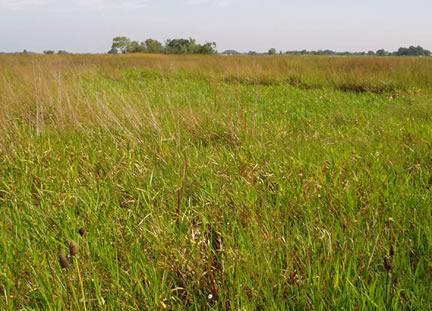
'Prairie Pothole' Wetlands Key to Gulf Water Health

Huge swaths of wetlands along the upper Gulf Coast are more connected to the Galveston Bay of Texas and other navigable waterways than previously thought, new research suggests.
Wetlands farther up in the watershed the coastal "prairie pothole" wetlands are just as critical to the health of state and federal waters as those that are right next to these waters, said study team member John Jacob, an environmental quality specialist with Texas AgriLife Research, an extension of Texas A&M University, in College Station. The new study could aid the preservation, management and regulation of wetlands , according to the study team.
"Loss of wetlands closer to traditional navigable waters must be mitigated under the Clean Water Act by creating new wetlands, or preferably by protecting and restoring similar existing wetlands," Jacob said. "This ensures that the aquatic integrity of state and federal waters is maintained, because wetlands provide critical ecological services such as pollution removal, among others."
Ecosystem anatomy
In the anatomy of ecosystems, "forests are the lungs and wetlands are the kidneys," Jacob said.
"But headwater wetlands, like the prairie pothole wetlands we studied, are perhaps more like lymph nodes, acting to filter pollutants in the furthest reaches of the watershed."
"Given that at least one-third of the water in Galveston Bay is derived from runoff which courses through these wetlands, it is critical that we do not lose so many of these wetlands that we can no longer maintain a healthy aquatic ecosystem," Jacob added.
Sign up for the Live Science daily newsletter now
Get the world’s most fascinating discoveries delivered straight to your inbox.
Previously, the coastal prairie potholes (shallow ponds about 6 to 12 inches deep that were formed thousands of years ago by ancient rivers) were thought to not exchange much water with the traditional navigable waterways downstream, Jacob said.
But that thinking didn't jibe with many years of observations of runoff coming from the wetlands, said rangeland scientist Brad Wilcox, also of Texas AgriLife Research. The new study found that runoff happened regularly and accounted for at least 17 percent of the precipitation moving into the watershed during the 45-month-long study, Wilcox said.
Clean water implications
The results could help determine how far the Clean Water Act should extend up into the watersheds above traditional navigable waters. This has been heavily debated, and has resulted in many lawsuits and a long series of Supreme Court decisions, Jacob said. A case in 2006 ruled that if the nexus between wetlands and traditional navigable waters could be quantified, then those wetlands should fall under the jurisdiction of the Clean Water Act, he said.
"The research we've reported here is the first in the country, after Rapanos [the 2006 ruling], to address the nexus issue for a class of wetlands in this case, coastal prairie potholes on the upper Texas Gulf Coast," Jacob said.
Jacob said with all the new development and potential loss of wetlands coming to the lower Galveston Bay watershed in the next few decades, there's a threat of "losing the defenses we need."
The study's findings will appear in an upcoming edition of the journal Wetlands.











